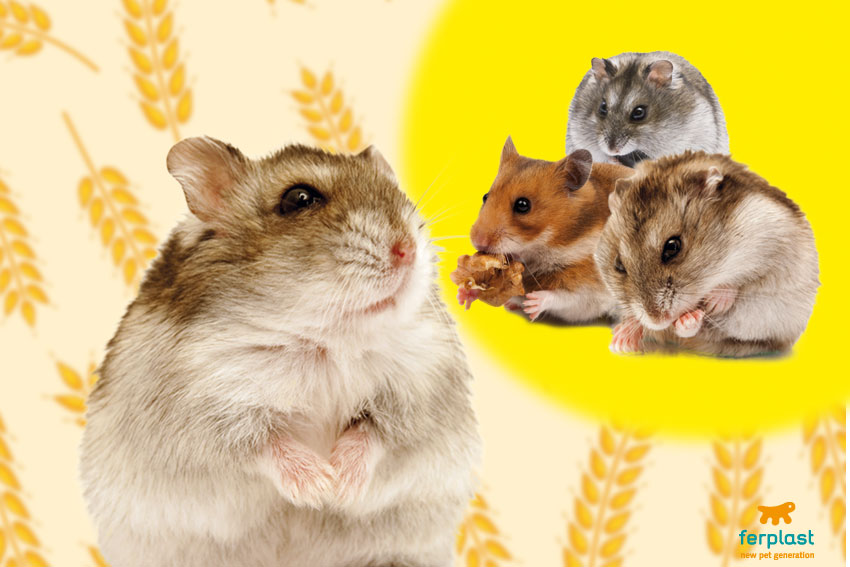Fundamental Traits of Hamster Breeds
Hamsters are popular small pets known for their playful antics and adorable appearance. With various breeds available, each type of hamster boasts unique traits, appearance, and care requirements. In this article, we’ll delve into the fundamental characteristics of key hamster breeds, helping you make an informed choice for your next furry friend.
Common Hamster Breeds and Their Characteristics
When exploring the world of hamsters, several prominent breeds stand out due to their distinct traits. These hamster breeds can significantly vary in size, coloration, personality, and habitat needs. Understanding the essentials of each breed will enable you to provide better care and create a suitable environment introspective of their unique traits.
Syrian Hamsters
Syrian hamsters, also known as golden hamsters, are the most commonly kept pet hamster breed. They usually measure around 5 to 7 inches in length and come in a variety of colors, including golden, cream, and black. Syrian hamsters tend to have a friendly disposition, making them ideal pets for children and first-time owners. Due to their solitary nature, they should be housed alone to prevent territorial disputes. Because Syrian hamsters are primarily nocturnal, they tend to be more active in the evenings, showcasing their playful side as they explore their habitat.

Dwarf Hamsters
Dwarf hamsters, including the Campbell’s dwarf hamster and the Roborovski, are known for their small size and lively personalities. They typically measure between 2 to 4 inches long. Campbell’s dwarf hamsters are particularly social and enjoy the company of others, so they can often be kept in pairs or groups granted appropriate space. In contrast, Roborovski hamsters tend to be more skittish and are best enjoyed in single households. These hamsters thrive in enriched environments, where they can engage in plenty of exploration and activity throughout the day.
Chinese Hamsters
Chinese hamsters are around 3-4 inches long and recognized for their distinctive long tails that set them apart from other breeds. With a sweet disposition, they often develop strong bonds with their owners. Chinese hamsters can be slightly timid, so patience and gentle handling are key to earning their trust. Sometimes, they display a sociable behavior but may not favor living with other hamsters, making a solitary habitat preferable for them. Their penchant for night exploration makes a well-structured habitat critical for keeping them engaged.
Physical Traits of Hamster Breeds
The physical characteristics of hamsters can vary greatly across breeds, impacting factors like care, space, and environmental setup. Hamsters differ in size, fur types, and even tail lengths, with certain traits being specific to particular breeds. Understanding these physical traits can help you decide which breed fits your lifestyle best.
Size and Weight
Hamsters can range significantly in size, from the petite Robo dwarf hamsters to the larger Syrian hamsters. Typically, savvy pet owners can anticipate a size average of 1 to 7 inches, making hamsters a suitable choice for small living spaces. It’s essential to respect their space requirements, as larger breeds may require more extensive habitats compared to their smaller counterparts. This variance will also affect the type of bedding, cage size, and enrichment items you should provide.
Coat Color and Texture
Hamsters display a wide array of coat colors and textures. While Syrian hamsters famously possess a soft, luxurious coat, dwarf hamsters often feature shorter fur due to their genetic background. Some hamsters exhibit multi-colored patterns and markings, adding aesthetic appeal to your pet choice. When choosing a hamster breed, consider the grooming needs involved with longer-haired species, as they may require routine brushing to prevent matting.
Behavior and Habitat Needs
Different hamster breeds exhibit varied behavior patterns, which can significantly influence their care requirements. Understanding their behavior and habitat needs plays a crucial role in ensuring a happy and healthy life for your pet. Each breed’s temperament may impact their interaction with humans and their response to surroundings.
Nocturnal vs. Diurnal Activities
Primarily, hamsters are nocturnal animals, meaning they’re more active at night. Syrian hamsters serve their owners well as great nighttime companions, readily engaging in playful behaviors once the sun sets. In contrast, some dwarf hamsters, particularly the Campbell’s breed, can display a more flexible activity cycle, sometimes engaging in play during the day. This primary behavior characterizes their environmental needs; providing a quiet and low-light habitat allows your hamster’s natural instincts to emerge freely.
Socialization Preferences
While some hamster breeds flourish in social environments, others favor solitary living. For instance, Campbell’s dwarf hamsters enjoy companionship and thrive in groups, while Syrian hamsters can become territorial if housed with others. Prior to bringing home a hamster, it’s vital to understand its social needs to create a suitable habitat. In instances where socialization fosters positive behaviors, like communal play, ensuring ample space is essential to avoid clashes that could lead to stress or injuries.
Exercise and Enrichment for Hamsters
Like all pets, hamsters require ample exercise and enrichment in their environment to lead happy, fulfilling lives. Their natural behaviors dictate how their habitats should be set up to promote exploration, climbing, and running. By knowing the exercise needs specific to hamster breeds, pet owners can maintain a healthy pet.
Importance of a Wheel and Playtime
An exercise wheel is crucial in providing physical activity opportunities for hamsters. Choose wheels tailored to each hamster breed’s size; larger Syrian hamsters require wider, more robust wheels, while dwarf hamsters often do well with smaller dimensions. Additionally, daily playtime is instrumental; allowing your hamster to roam outside of their cage (in a safe, supervised area) fosters essential mental stimulation.
Creating an Enriching Environment
To ensure your hamster feels enriched, remember to include tunnels, climbing structures, and chewable items in their habitat. This serves dual purposes, offering stimulation while supporting their dental health through gnawing activities. Consider incorporating sensory items, such as bedding with varying textures, to fuel exploration and curiosity—a critical aspect of their well-being.
Key Takeaways
– Different hamster breeds possess unique traits affecting care, such as size and temperament.
– Syrian hamsters typically thrive in solitary living, while dwarf species may enjoy company.
– Understanding the exercise and enrichment needs for your chosen breed is essential to their overall health.
– Provision of safe habitat enrichment fosters natural instincts and contributes to hamster happiness.
FAQ
1. What is the best habitat setup for a Syrian hamster?
A Syrian hamster requires a spacious cage with specific features such as a solid floor, bedding for burrowing, and a secure lid. Providing a wheel, tunnels, and chew toys will ensure that your hamster remains active and engaged. Clean the cage frequently to maintain hygiene and keep your pet healthy.
2. Can different hamster species live together?
Generally, it’s not advisable to keep different hamster species together as most are territorial. Syrian hamsters should be housed alone, while some dwarf species like Campbell’s can live in pairs or small groups if adequate space allows. Always monitor their interactions to avoid aggression.
3. How frequently should I handle my hamster?
Start handling your hamster gently and gradually as it becomes familiar with you. Aim for a few short sessions per day, allowing your pet to acclimate to your presence. Over time, you can increase handling frequency, but always respect your hamster’s comfort level.
4. What is the average lifespan of a hamster?
The lifespan of hamsters typically ranges from 2 to 3 years depending on the breed. Syrian hamsters often live longer compared to dwarfs. Proper care, diet, and habitat management can contribute to a healthier and potentially longer life for your pet hamster.
5. How do I know if my hamster is healthy?
A healthy hamster is active, curious, and has bright eyes without any discharge. Ensure there are no signs of lethargy, abnormal posture, or changes in eating habits. Regular veterinary checkups can help monitor your pet’s health and identify any underlying issues promptly.
### Conclusion
Understanding the fundamental traits of hamster breeds is essential for prospective owners. Whether you lean toward a lively Syrian hamster, a social Campbell’s dwarf, or a charming Chinese hamster, you can create a delightful and enriching environment that suits your pet’s specific needs. With proper care, love, and attention, your hamster will thrive and become a cherished member of your household.
